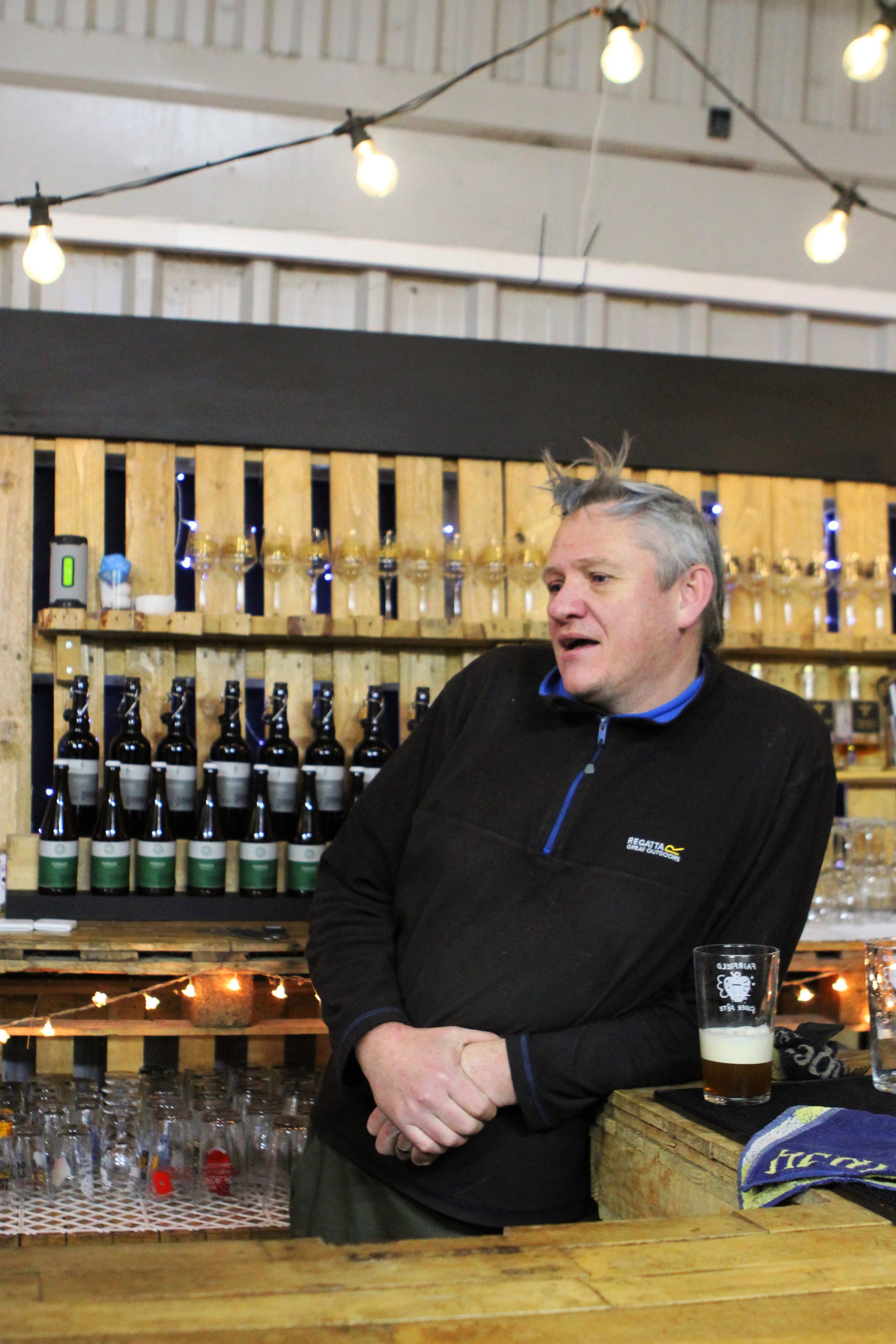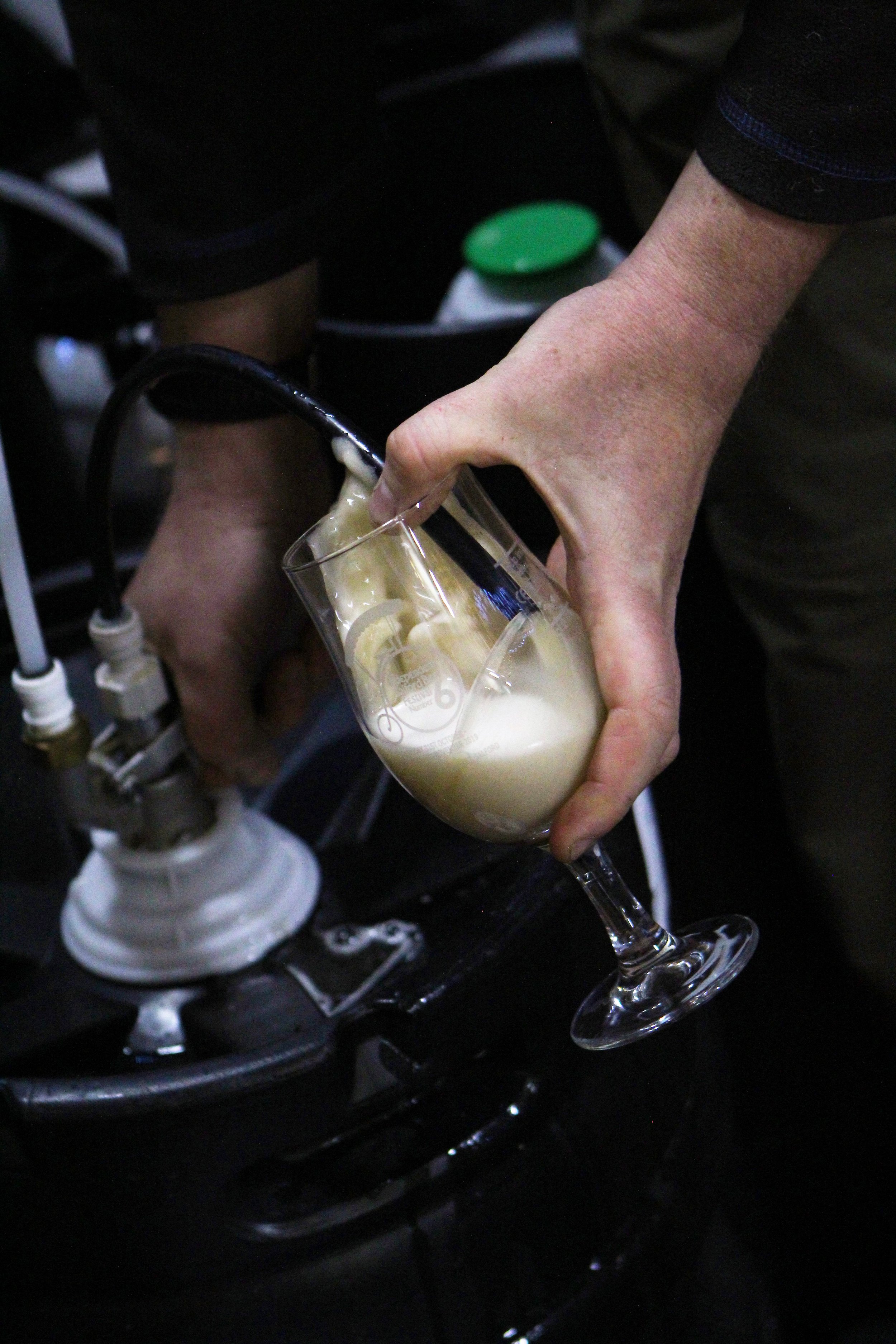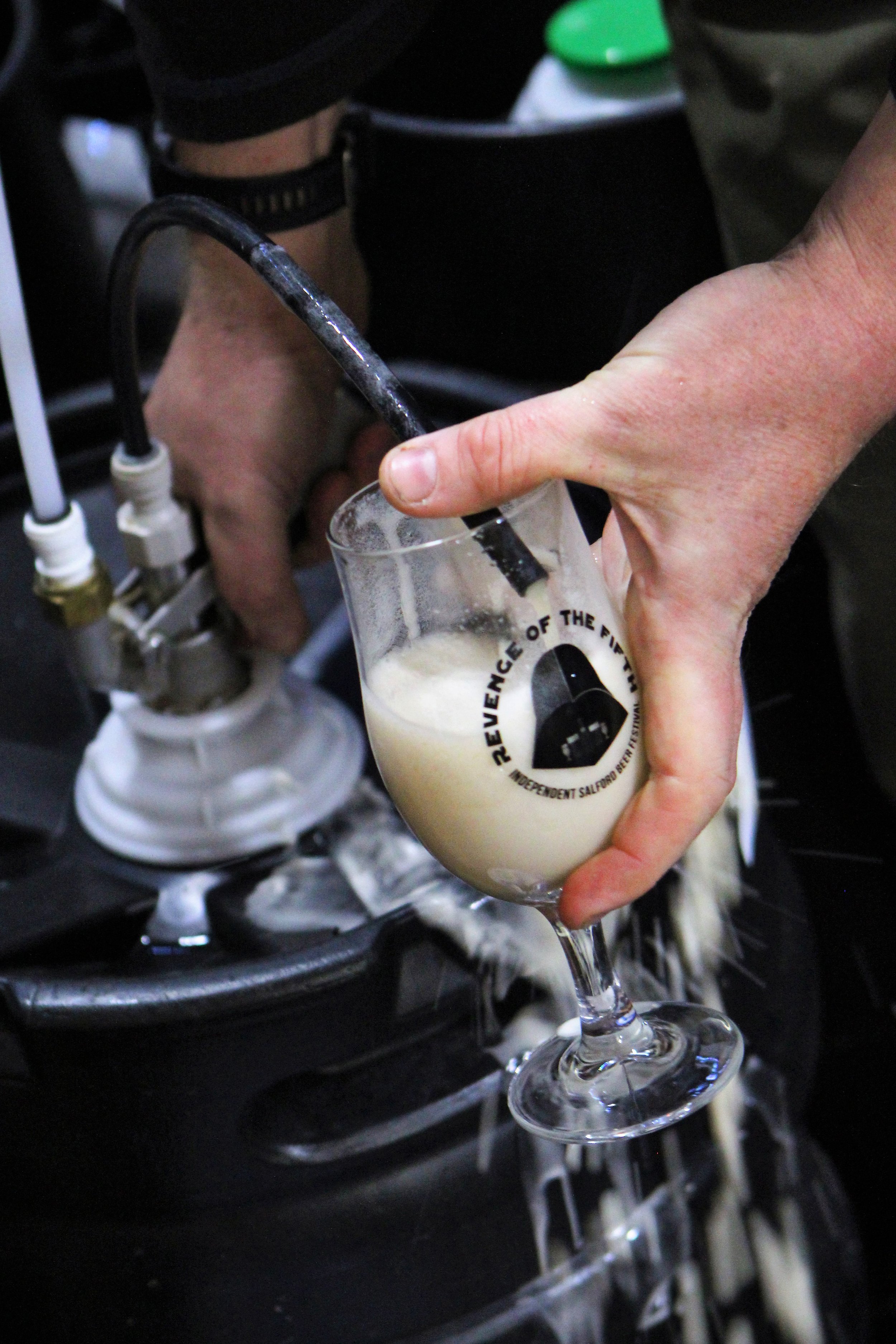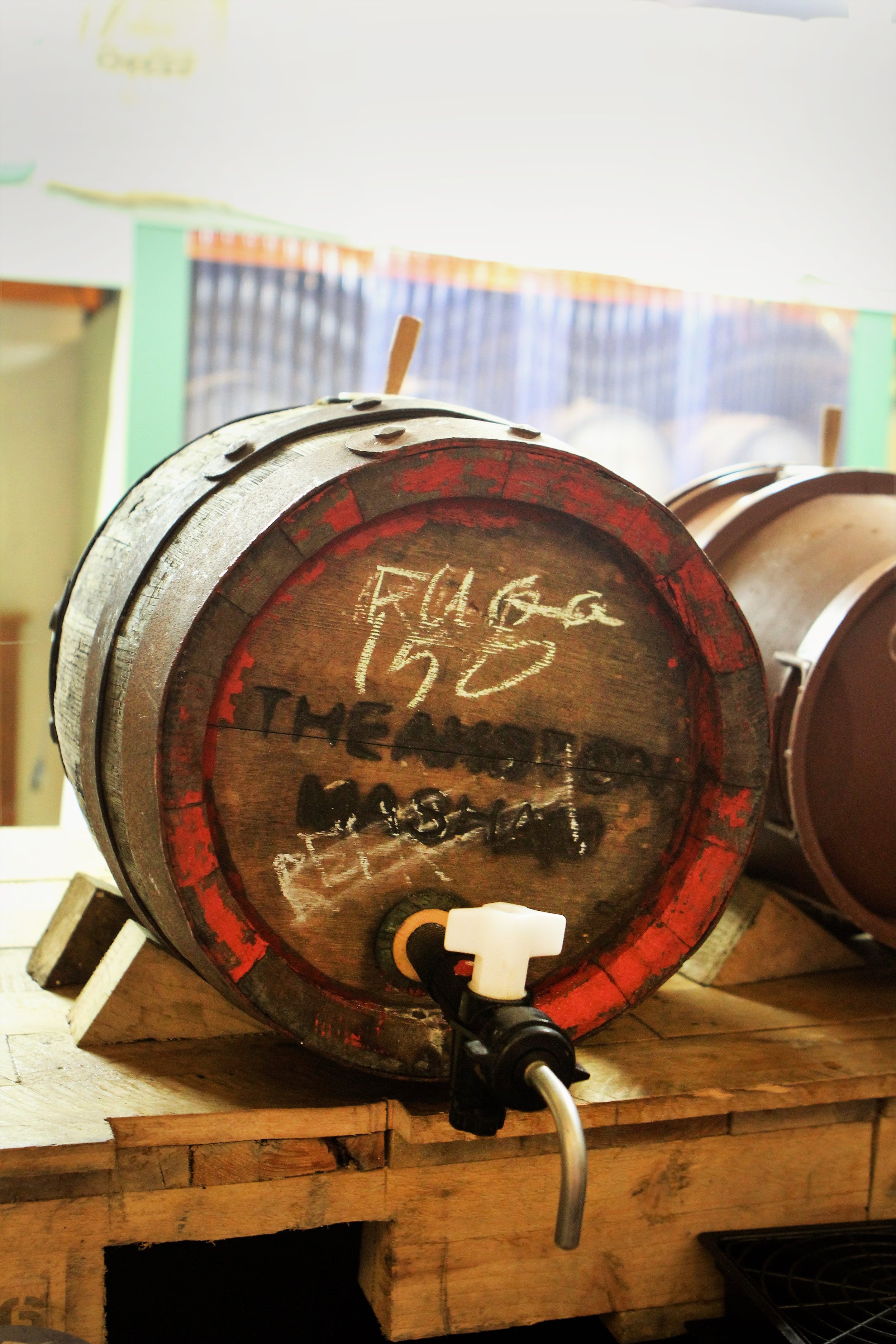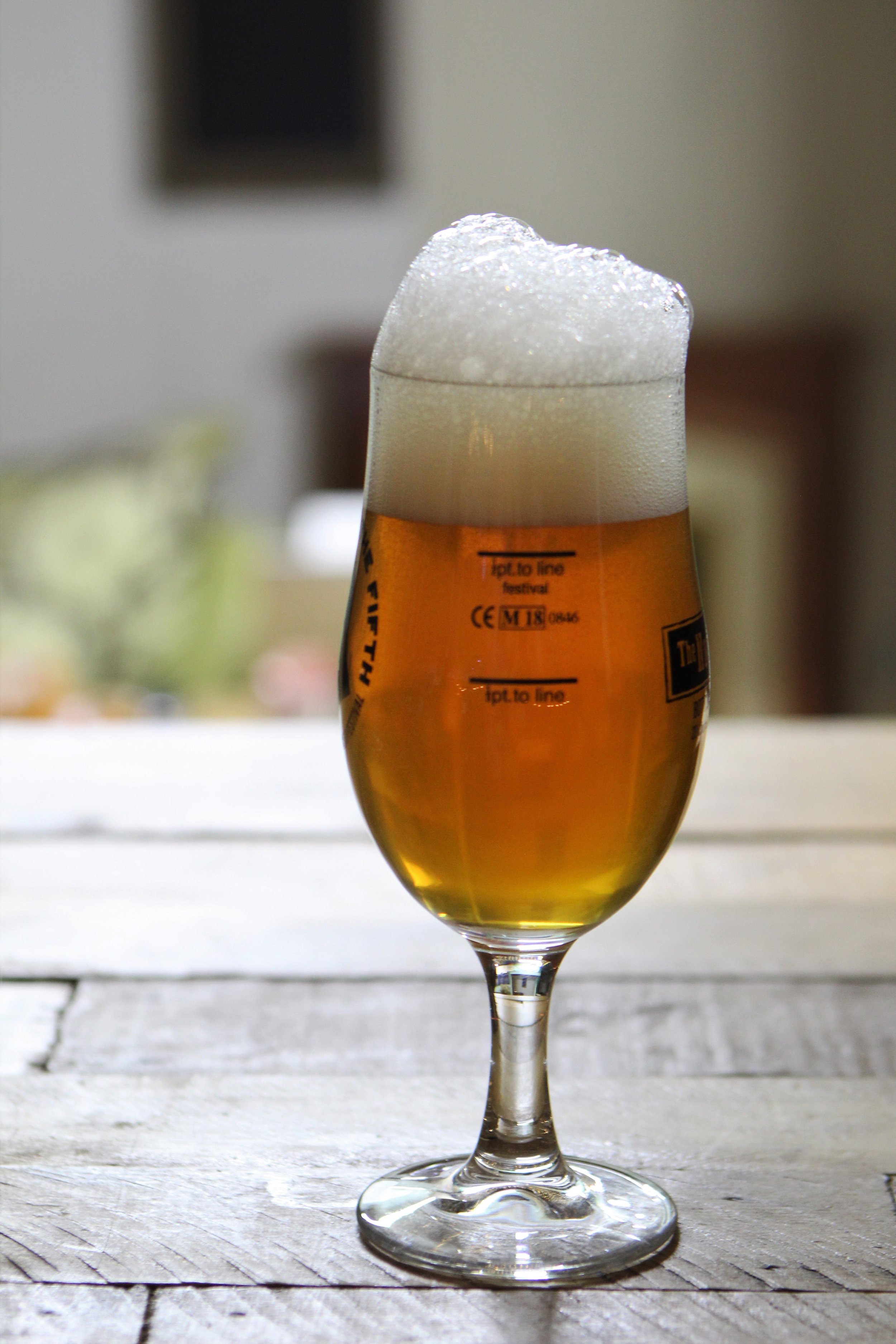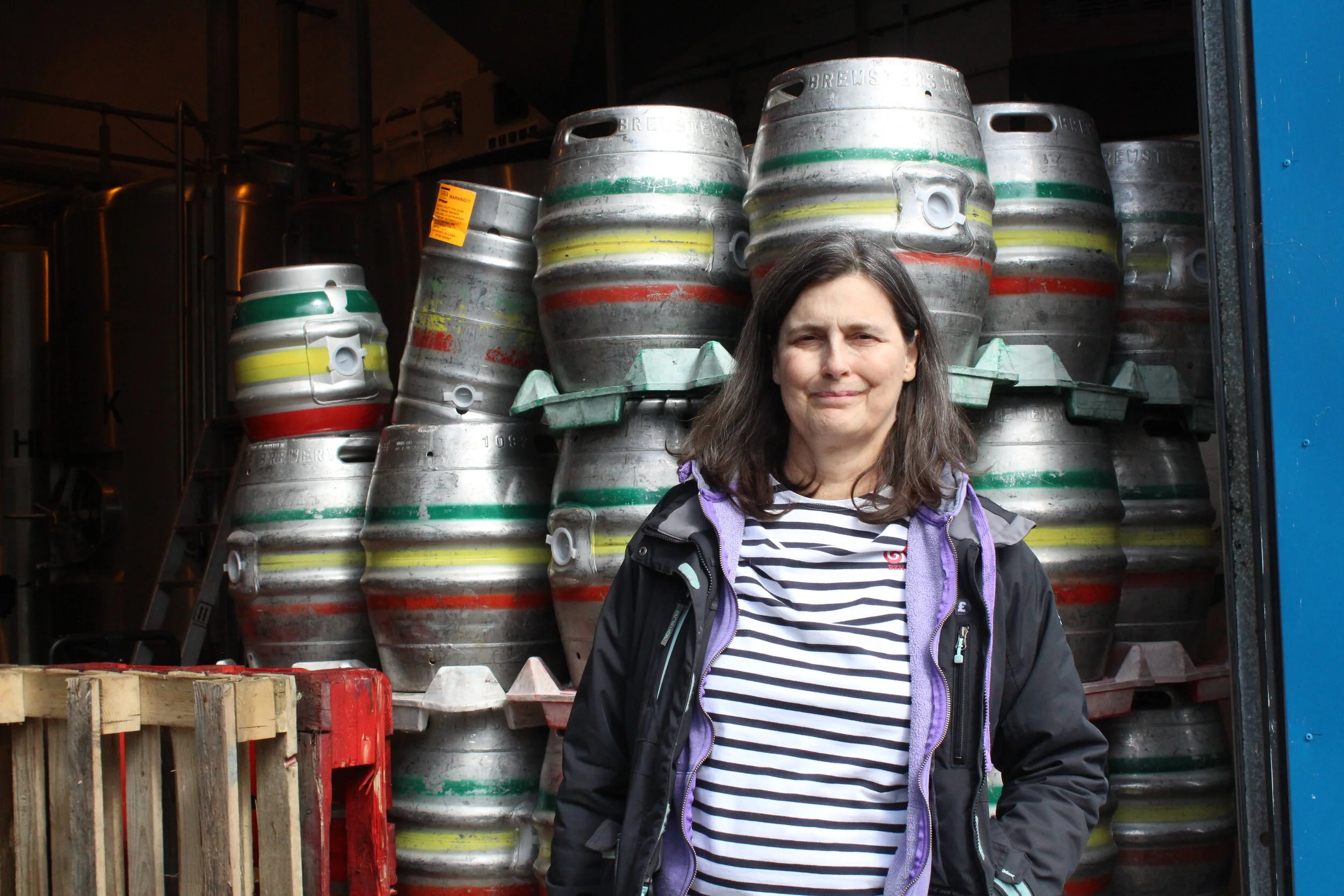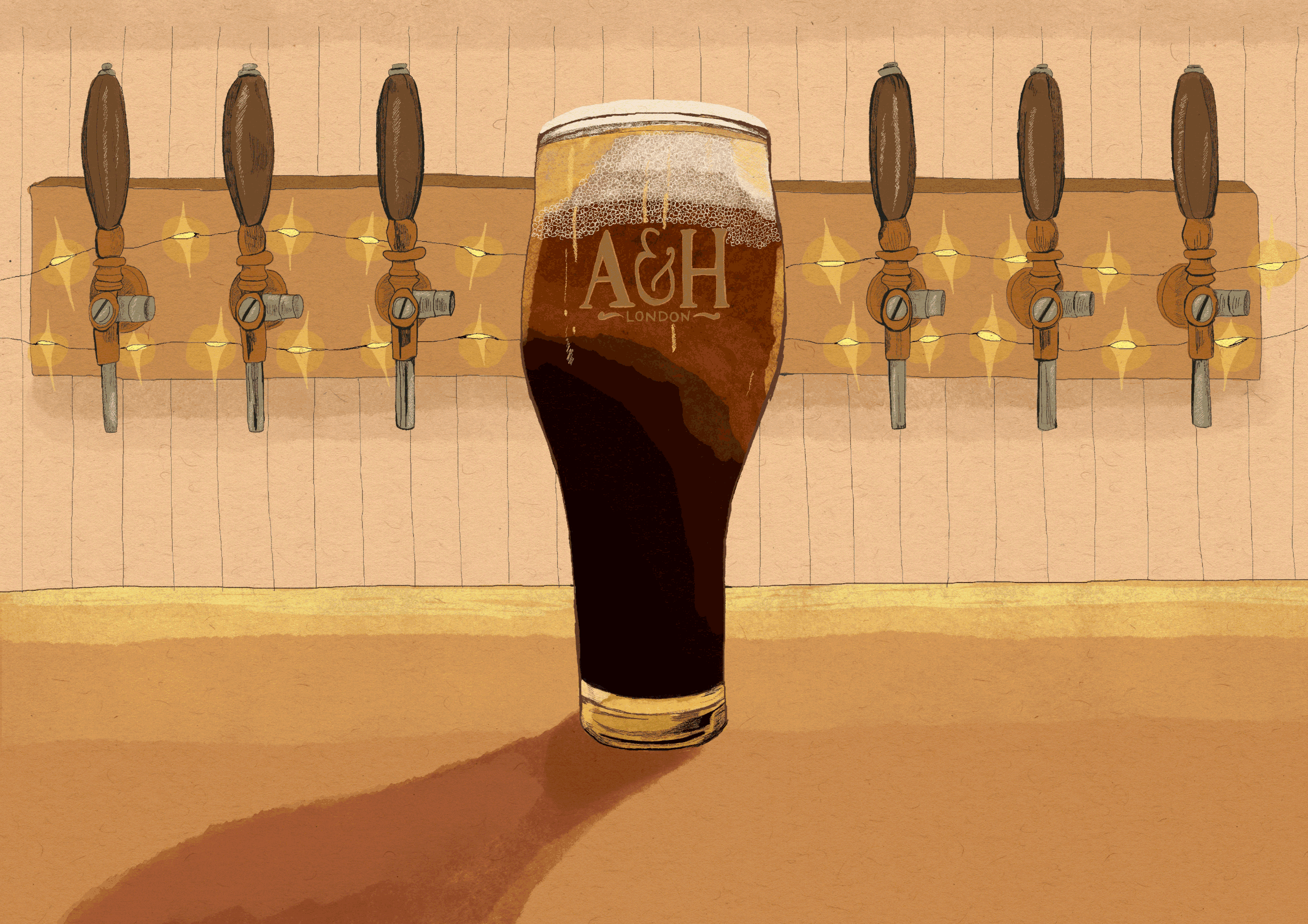Up the Down Escalator — Beer Nouveau in Manchester, England
Sadly Beer Nouveau closed its doors in late 2023, although its founder Steve Dunkley is still actively involved in the beer industry as a writer, and general agitator, for which we have the utmost respect.
***
“I like beer. I just really like beer,” Steve Dunkley, Beer Nouveau’s founder and sole proprietor, tells me.
If you’re lucky enough to visit Steve, it’s best to forget everything you think you know about the history of beer. Squirrelled away in one of Manchester’s prolific railway arches, a mile or so from the town centre, He’s quietly developing revolutionary ideas about brewing in the past. He also looks to the future, nurturing a new generation of brewers and cidermakers that also utilise the railway arch he rents between North Western and Temperance Street in Ardwick, southeast of Manchester Piccadilly Station.
Photography by Laura Hadland
I’ll be honest, after an afternoon with Steve, you are also quite likely to forget significant pieces of information about your own history; the names of loved ones, your address, that sort of thing. He’s always eager to spin a yarn over a beer or seven.
***
Steve has been in the pub trade since 1992 and began brewing in 2014 with £350 worth of kit in his garage in Prestwich, North Manchester. He started with “traditional” recipes, roughly defined as those from the 1970s onwards. An adamantine character, Steve made those beers to prove to sceptical friends in the trade that they actually did taste good. A pint of Bass, a Highgate dark mild, a cheeky half of Flowers IPA. Steve was annoyed their reputations had become tarnished. He resurrected them to prove a point.
Beer Nouveau has grown from these modest beginnings. Its arch houses Steve’s 1200 litre brewery; quite a jump from his original 40-litre homebrew kit. He opened the taproom a year later, and a myriad of other vibrant small businesses have since emerged on site. Some are under Steve’s co-ownership and others enjoy an affordable home with access to shared equipment, keeping their overheads low.
With so much going on, the cluttered brewery is a little slice of homely, unpolished anarchy to visit.
“It looks a mess down this end, but it’s an organised mess,” Steve tells me. “Which is why there’s a microwave on top of one of the fermenters.”
After a nonchalant shrug, he gives me the “official tour”. Wooden barrels, fermenting vessels and shiny stainless steel kegs jostle for position. Every available surface is taken up with precarious towers of crates and boxes, all apparently occupying a designated spot in the carefully shepherded chaos.
“Everything here is salvaged,” Steve says with his best faux-innocent grin. “I don’t like paying for things when I can get them for free. The table football is on a slant though.”
““The gathered community of various enterprises operating within Steve’s railway archway is reflective of the man himself.””
Steve tells me about the generous amount of energy he devotes to homebrewers and small businesses. He does it because he is determined to democratise access to beer.
“Beer really should be for everybody,” he says. “The only thing that should be on a pedestal is the sink in the toilets. Not the beer. Not the brewer.”
Some of the itinerant breweries working out of the arch include Temperance Street Brewing, The Steelfish Brewing Co., and the Doomed Brewing Project. Local homebrewers meet regularly there to brew on the 25l test kit. If you look hard enough you might spot a trace of The Cat in the Glass, an online bottle shop, which took residence here for a time, while Temperance Street Cider are always on show with two permanent keg lines on the bar.
The Steelfish Brewing Co. enjoyed the use of all the equipment they needed to transition from homebrewers to a commercial operation, as well as providing their first route to market. Co-founder Simon Goodier has only kind words for the support Steve has given them.
“The gathered community of various enterprises operating within Steve's railway archway is reflective of the man himself,” he tells me. “And his selfless, enthusiastic support for others.”
Steelfish have flown the nest now, moving to the nearby Ventile Brew Co in Reddish, to access a larger brew kit.
My personal favourite among those sharing this eclectic space is the Manchester Hop Project. Local residents grow their own hops and donate their harvest in return for a share of the finished beer. It is so successful that they are now investigating ways to dry and pelletise the hops, as they receive more than they can use fresh.
***
“Almost everything we think we know about beer history is a load of bollocks,” Steve says.
His efforts at recreating brewing history have gradually reached further and further back in time, first to the heritage and then the historical. He was an early adopter of the idea that ancient people in the British Isles were making beer even before they started planting crops (still a controversial theory in academic circles.) However, the fragmentary archaeological evidence does line up with the idea that some hunter-gatherers spent their summers in familiar locations and utilised the wild grains that grew there.
Suggesting ancient communities used the sugars in grain to make a prestige product rather than using the starch to produce a staple food has proved to be a paradigm shift too far for many archaeologists. The organic nature of brewing and baking means that concrete evidence is scant. The only way to test the theories is to try them.
“I think bread came from beer gone wrong, not the other way around,” Steve tells me. “And there's more and more evidence of it cropping up.”
““He makes great efforts to get hold of ingredients as close to the originals as he can.””
Working with archaeologist Merryn Dineley and her brewer husband Graham in 2018, Steve was able to produce a blueprint for a Viking ale. He was able to procure one sack of precious Orkney Bere malt from malt specialist Will Longmate, who malted it at Barony Mills Malting Box, now Curio Malting, in Milton Keynes. Bere is a heritage malt made from a descendent of the landrace barley that the Vikings would have introduced to the UK and fired using the barley husks as kiln fuel. This scarce grain has traditionally all been used by island locals Swannay Brewery to make a delicious biscuity pale ale, Scapa Bere, but with the popularity of heritage barley’s increasing others, such as Newbarns in Leith, have also been able to get hold of small quantities.
When Steve was discussing the adventures behind procuring this malt at Beer Nouveau’s taproom, one regular patron, Ivar Aune, spoke up. He was a Norwegian homebrewer that also happened to be a regular visitor for matches at Manchester United.
“[Aune] said if I was going to make this ale, I'd have to do it right and he'd bring over some spruce tips and something called kveik yeast which nobody had heard of at the time,” Steve says. “I couldn't turn that down.”
In doing so Beer Nouveau became one of the first UK breweries to use a kveik yeast strain popularised through the research of writer Lars Marius Garshol. And instead of hops, the beer was flavoured with a herb called meadowsweet. Steve admits the first attempt was disappointingly astringent. Luckily, another regular—who just so happened to be a lecturer on Botany—came to the rescue. They pointed out that Steve should have used just the flowers, not the stems too.
“We did the proper batch with the kveik, spruce tips and Meadowsweet flowers, and it was sublime,” Steve tells me.
***
In order to bring even more historical brewing techniques and recipes, back in 2017, Steve raised nearly £10,000 via crowdfunding. Thanks to this he was able to fund a heritage barrel-ageing project, which involved experimenting with steam cleaned barrels to try and understand the impact of the wood itself on beer.
Working with renowned beer historian Ron Pattinson, they planned to recreate an 1868 East India pale ale and an 1859 Russian imperial stout. As research turned up new information and the crowdfunder surpassed its original target of £8000, a nineteenth-century East India Porter was also added—a hoppier and less mature drink than the pale, made for the British troops rather than the officers.
The mixed-fermentation recipes relied on Brettanomyces in the wood of the barrels to modulate the character of the finished beers. Steve inoculated his barrels, but we don’t yet know how the Victorian brewers knew it was in theirs.
“He makes great efforts to get hold of ingredients as close to the originals as he can,” Ron tells me, adding that he was really impressed with Steve's commitment to recreating old recipes as authentically as possible. “I particularly admire his determination to use wooden casks.”
The original Tetley’s East India Pale Ale recipe used by Beer Nouveau was recreated as faithfully as possible. “Although I don’t have a big boat” Steve muses glumly. Their 1874 Tetley’s yeast was complemented by a barley malt called Chevalier Nouveau, which was specially kilned once again by Will Longmate. He had come into possession of a 1970s Tetley’s pale malt pattern liberated from a skip when the old Leeds brewery was cleared.
Will dialled in the equipment to mimic a nineteenth-century kiln. Without mechanical fans, the air moved via natural aspiration, so they attempted to recreate that in an electric element system. Of course, the kiln was not coal-fired either, to avoid the inconvenience of arsenic contamination. Steve claims it is the most authentic version of a traditional IPA produced by a modern brewer.
The result was a surprisingly dark beer with an incredibly effusive, creamy head. It could easily pass off as a red ale, being pale in name but not appearance, at least according to our modern definitions. It drank beautifully, with an unforgettable mouthfeel, light acidity and gentle notes of fresh leather and toffee.
““The only thing that should be on a pedestal is the sink in the toilets. Not the beer. Not the brewer.””
The Russian imperial stout was made to an early Barclay Perkins recipe, again with Chevalier Nouveau. Aged in the barrel on Brett for two years, it has a tangy flavour with an almost tangible crunchiness, like biting into a 95% cocoa solid chocolate. It dries your mouth out in the same way that chocolate would too, and has earthy notes from the chocolate malts it contains. There is also a tartness to it, reminiscent of dried fruits—especially cranberry—it is somehow concentrated without being sticky. In fact, there is no sweetness to it at all, It is dry and has an incredibly light body.
It has layers of complex flavour and doesn’t taste like any other Russian imperial stout I’ve tasted before. It’s a fascinating beer because we don’t really know anything about the origins of this style either. UK brewers made a strong stout to sell to the Russians in the late 1800s. It took three months to get to St. Petersburg. Those are only the facts behind romantic myths of English princesses and Russian Czars.
More recently, Beer Nouveau was the only brewery in the country to celebrate the 150th birthday of Fuggles. This quintessential British hop went on sale on November 8th, 1861, according to beer historian Martyn Cornell. Martyn tells me the discovery of the date is credited to a local historian in Kent, Lionel Burgess.
“[Lionel] found the original advertisement in the Maidstone and Kentish Journal announcing the sale of 100,000 sets of ‘the new hop called Fuggle's Goldings,’” he says.
Steve’s celebratory beer was made with Chevalier malt, green hopped with 100% Fuggles from his own garden. It was brewed, conditioned and served from wood, as per the original. The resulting beer was earthy with a sweet vegetal note and hints of citrus and peach. It was a rarity in itself, as Fuggles were rarely used on their own even historically, with Goldings often being added to dry hop beers that had Fuggles in the boil.
Steve describes Beer Nouveau as “a little bit unique”, saying there is no other brewery like it and no one else quite like him. I’d be inclined to agree. Manchester is chock-full of fantastic breweries. The city still holds a reputation for going big on the US hops that began to appear in the UK 30-odd years ago with Brendan Dobbins’ legendary (and now sadly defunct) West Coast Brewing Company.
“I brew for me, I brew to see what the beers were like, I brew out of curiosity,” Steve tells me. “And our regulars drink out of curiosity.”
1. Read more about ancient ales in one of Merryn’s most recent papers. https://exarc.net/issue-2021-2/at/ancient-magic-malt-making accessed on 29/1/21




